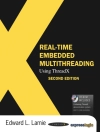The book systematically introduces smart power system design and its infrastructure, platform and operating standards. It focuses on multi-objective optimization and illustrates where the intelligence of the system lies. With abundant project data, this book is a practical guideline for engineers and researchers in electrical engineering, as well as power network designers and managers in administration.
Mục lục
Table of content:
Chapter 1 Introduction
1.1 Review of the Concept of Digital Power System (DPS)
1.2 Definition of Smart Power System (SPS)
1.2.1 Smart Power System (SPS) and Smart Wide Area Robot (S-WAR)
1.2.2 Summary of Smart Power System
1.2.3 SEMS and Chinese Smart Power System
1.3 Significance of the Construction of Smart Power System
1.3.1 Radically Improvement in Disaster Prevention Capability
1.3.2 Significant Improvement in Economic Performance Index and Power Quality
1.4 Foreign Research Status
1.4.1 IECSA Project
1.4.2 Seamless Communication Architecture of Power System
1.4.3 PJM Advanced Control Center [6]
1.4.4 IBM Intelligent Utility Network
1.4.5 Advanced Distribution Automation
1.5 Conclusion
Chapter 2 Summary of Hybrid Control Theory of Power System (HCTOPS)
2.1 Introduction
2.2 Dichotomy of State Space
2.3 E Transform and X Transform
2.4 Geometric Meaning of Double Transform
2.5 Multiple Near-optimal Index States Sets
2.6 Events Start Control, Control Eliminate Events
2.7 Time Base and Events Base
2.8 Discussion about Hybrid Control System Architecture and Some Problems
2.9 Conclusion–Smart Wide Area Robot
Chapter3 Smart Power System Infrastructure
3.1 Introduction
3.2 Digital Substation
3.2.1 Definition of Digital Substation
3.2.2 Basic Contents of the Construction of Digital Substation
3.3 Digital Power Station
3.3.1 Definition of Digital Power Station
3.3.2 Basic Contents of the Construction of Digital Power Station
3.4 Digital Line
3.4.1 Definition of Digital Line
3.4.2 Basic Contents of the Construction of Digital Line
3.5 Conclusion
Chapter 4 Basic Platform for Smart Power System
4.1 Introduction
4.2 Basic Communication Platform
4.2.1 Needs of Basic Communication Platform
4.2.2 Basic Communication Platform Architecture and Technology
4.3 Data Sharing Platform
4.3.1 Needs of Data Sharing Platform
4.3.2 Data Sharing Platform Architecture and Technology
4.3.3 Advanced State Estimate for Real-time Data Sharing of Kernel
4.4 Conclusion
Chapter 5 Standard Index System of Smart Power System Operation
5.1 Introduction
5.2 Establishment of Operating Standards Index System
5.2.1 Construction Approaches
5.2.2 Basic Composition
5.2.3 Establishing Process
5.3 Security Index
5.3.1 Research Background
5.3.2 Numerical Approximation of the Shortest Radius of Voltage Security Domain
5.3.3 Numerical Approximation of the Shortest Radius of Small Signal Security Domain
5.3.4 Numerical Approximation of the Shortest Radius of Transient Security Domain
5.3.5 Numerical Simulation
5.4 Control Performance Index of Interconnected Power System
5.4.1 Brief Introduction to Interconnected Power System Active Power Control Performance Index
5.4.2 Brief Introduction to Interconnected Power System Reactive Power Control Performance Index
5.5 Conclusion
Chapter 6 Events Analysis and Treatment Technology
6.1 Introduction
6.2 Advanced State Estimate Algorithm
6.2.1 Main Idea
6.2.2 Methods Introduction
6.2.3 Methods Characteristics
6.2.4 Example
6.3 Computation Algorithm of Optimal Power Flow Based on Constraints Conversion Technology
6.3.1 OPF Model
6.3.2 Algorithm Steps
6.3.3 Examples Analysis
6.4 Conclusion
Chapter 7 Smart Power System Visualization
7.1 Introduction
7.2 Contents of Smart Power System Visualization
7.2.1 Operation State Visualization
7.2.2 From State Visualization to Monitoring Visualization
7.3 Topology Self-generation
7.3.1 Basic Idea
7.3.2 Single Line Figure Self-generation
7.3.3 Power Station Main Wiring Graph Self-generation
7.4 Fast Graphic Rendering Algorithm
7.4.1 Interpolation Algorithm Analysis
7.4.2 Mesh Mergence Method
7.4.3 Application Example
7.5 Conclusion
Chapter 8 SEMS System
8.1 Introduction
8.2 Definition and Characteristics of SEMS
8.2.1 Definition of SEMS
8.2.2 Characteristics of SEMS
8.2.3 SEMS and EMS
8.3 Composition of SEMS
8.3.1 Events Analysis System
8.3.2 Events Treatment System
8.3.3 Dispatcher Decision System
8.4 Events Analysis Models in SEMS
8.4.1 Security and Stability Events Judgment
8.4.2 Power Quality Events Judgment
8.4.3 Economic Operation Events Judgment
8.5 Events Treatment Models in SEMS
8.5.1 Security and Stability Events Treatment
8.5.2 Power Quality Events Treatment
8.5.3 Economic Operation Events Treatment
8.6 Controllable Resources
8.6.1 Classified by Information Used by Control
8.6.2 Classified by Control Response Time
8.6.3 Classified by Power System Operation State Aimed by Control
8.7 Layered Hierarchical Architecture of SEMS
8.8 Conclusion
Chapter 9 Smart Power System
9.1 Introduction
9.2 Definition of Smart Power System
9.3 Improving Ideas, Constructing Modern Main and Distribution Network
9.4 Making Load be the Subject of Peak Regulation
9.5 Double-side Energy Management System of Smart Power System
9.5.1 User-Smart Energy Management System (U-SEMS)
9.5.2 Dispatch-Smart Energy Management System (D-SEMS)
9.6 Developing New Technology, Achieve Smart Dispatching
9.7 Distributed Energy System in Smart Power System
9.7.1 Distributed Energy Technology
9.7.2 Energy Storage Technology
9.7.3 New Technology Areal Dispatch Center and User’s Interaction
9.8 Conclusion
Giới thiệu về tác giả
Qiang Lu, Ying Chen, Xuemin Zhang, Tsinghua University, Beijing, China.












